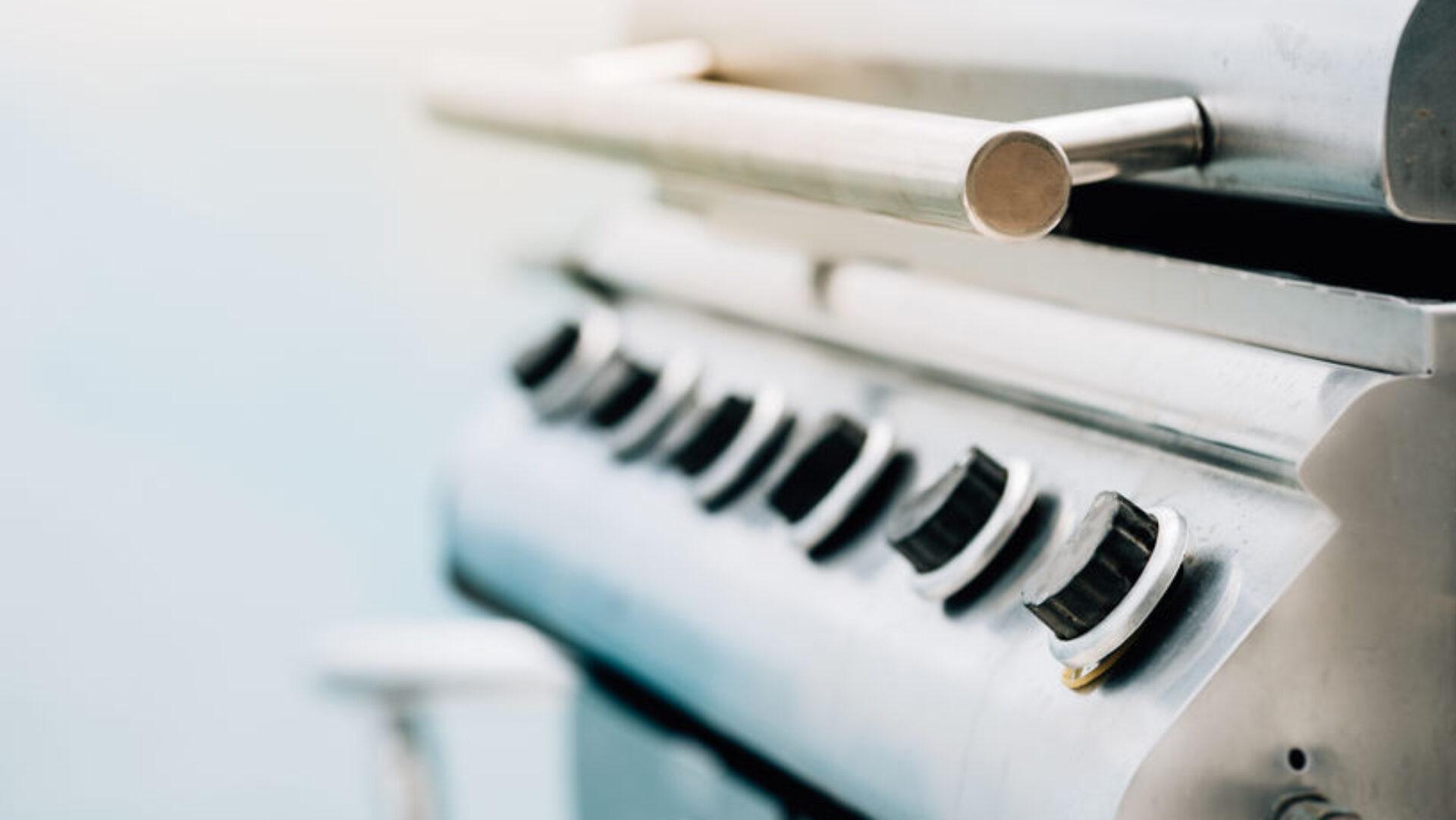This content has been archived. It may no longer be relevant
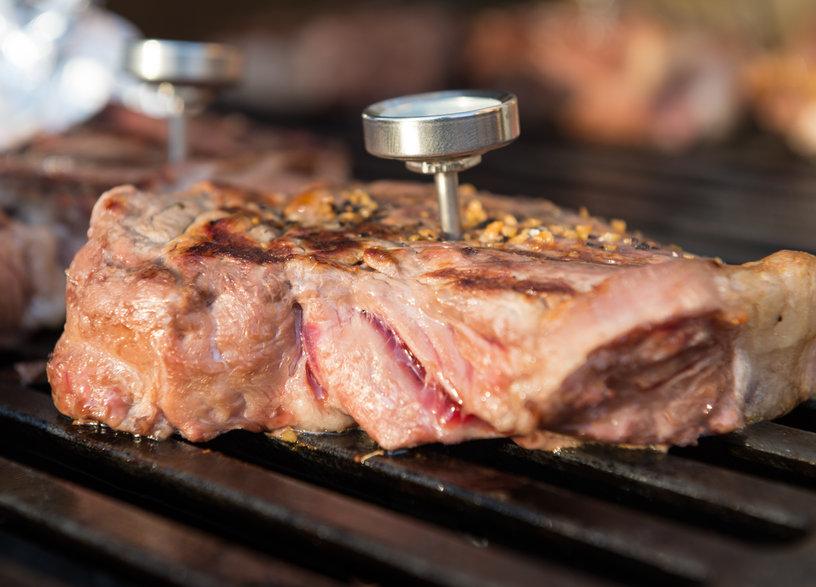
A meat thermometer is one of the most important accessories you can own for outdoor cooking.
Whether you’re grilling with gas, charcoal, or even an electric grill, a thermometer will give you accurate readings from the interior of your food.
You can even use a meat thermometer with a smoker.
Your thermometer will ensure that you can follow recipes and food safety guides closely.
When should you insert a meat thermometer?
Is it OK to leave a probe in the food throughout the entire cooking time?
We’re going to answer your questions so you can get the best results this grilling season.
Where to Insert a Meat Thermometer in a Steak
Knowing where to insert a meat thermometer in a steak is crucial for ensuring that you get an accurate temperature reading.
Here are some guidelines for where to insert a meat thermometer in a steak.
- For thin steaks. Insert the meat thermometer into the side of the steak, about 1/2 inch (1.3 cm) from the top.
- For thick steaks. Insert the meat thermometer into the thickest part of the steak, avoiding the bone or any fat.
- For bone-in steaks. Insert the meat thermometer into the thickest part of the meat, making sure it’s not touching the bone.
It’s important to note that the meat thermometer should be inserted into the center of the thickest part of the steak to get an accurate reading.
Avoid touching any bone, as this can give you an inaccurate temperature reading.
- The Kizen Digital Meat Thermometer is a reliable option for spot-checking your ingredients towards the end of the cooking time.
When to Insert a Meat Thermometer for Accurate Readings
Inserting a meat thermometer at the right time is crucial for getting an accurate temperature reading. Here are some guidelines for when to insert a meat thermometer in a steak.
- Insert the meat thermometer before grilling. To get the most accurate temperature reading, insert the meat thermometer into the steak before placing it on the grill. This will ensure that the temperature is measured from the center of the steak.
- Insert the meat thermometer halfway through grilling. If you forget to insert the meat thermometer before grilling, you can insert it halfway through the grilling process. This will give you an idea of how the steak is cooking and if it’s close to being done.
- Insert the meat thermometer at the end of grilling. If you’re not sure if the steak is done, you can insert the meat thermometer at the end of the grilling process to check the temperature. However, this may not be as accurate as inserting it earlier in the cooking process.
Remember to insert the meat thermometer into the thickest part of the steak for the most accurate temperature reading.
Also, be careful not to leave the meat thermometer in the steak while grilling, as this can damage the thermometer and give you inaccurate readings in the future.
- The Inkbird Bluetooth Meat Thermometer has four probes that can remain in the food while cooking, up to temperatures of 482°F. It has a base unit to display temperatures, or you can connect it to your smartphone wirelessly.
Tips for Using a Meat Thermometer Correctly
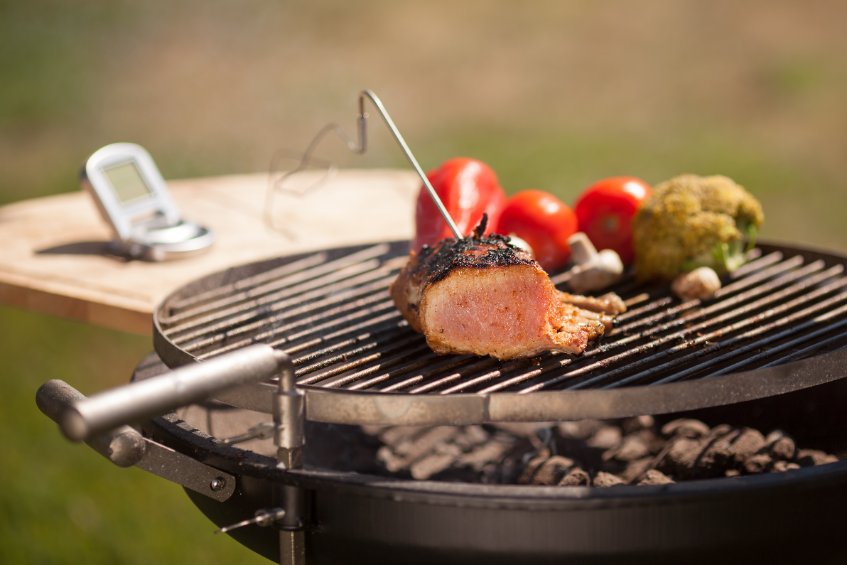 Using a meat thermometer correctly is key to ensuring that your steak is cooked to the right temperature.
Using a meat thermometer correctly is key to ensuring that your steak is cooked to the right temperature.
Here are some tips to help you use a meat thermometer correctly.
- Calibrate your thermometer. To make sure that your thermometer is accurate, it’s a good idea to calibrate it before using it. This can be done by placing the thermometer in ice water and ensuring that it reads 32°F (0°C), or boiling water and ensuring that it reads 212°F (100°C).
- Insert the thermometer correctly. Insert the thermometer into the thickest part of the steak, avoiding any bones or fat, and make sure it reaches the center of the meat.
- Wait for the temperature to stabilize. Once you’ve inserted the thermometer, wait for the temperature to stabilize before taking a reading. This can take up to 15 seconds.
- Clean your thermometer. After each use, clean your thermometer with hot, soapy water and dry it thoroughly. This will help prevent the spread of bacteria.
- Use a digital thermometer. A digital thermometer is more accurate than a dial thermometer and is easier to read.
- Use a meat thermometer for other meats. Meat thermometers can be used for other meats, such as chicken and pork, to ensure that they are cooked to the right temperature and safe to eat.
By following these tips, you’ll be able to use a meat thermometer correctly and ensure that your steak is cooked to perfection.
Common Mistakes to Avoid When Using a Meat Thermometer
Using a meat thermometer is an important step in ensuring that your steak is cooked to perfection.
However, there are some common mistakes that people make when using a meat thermometer that can result in inaccurate temperature readings.
Here are some common mistakes to avoid when using a meat thermometer.
- Inserting the thermometer too early or too late. It’s important to insert the thermometer at the right time. If you insert it too early, the temperature reading may not be accurate, and if you insert it too late, the steak may already be overcooked.
- Not inserting the thermometer deep enough. The thermometer should be inserted into the thickest part of the steak, and the probe should be inserted deep enough to reach the center of the meat. If the thermometer isn’t inserted deep enough, the temperature reading may be inaccurate.
- Touching bone or fat. When inserting the thermometer, make sure it doesn’t touch any bones or fat, as this can result in an inaccurate temperature reading.
- Leaving the thermometer in the steak while cooking. Leaving the thermometer in the steak while cooking can damage the thermometer and give you inaccurate readings in the future.
- Not cleaning the thermometer. After each use, clean your thermometer with hot, soapy water and dry it thoroughly. This will help prevent the spread of bacteria.
By avoiding these common mistakes, you can ensure that your meat thermometer is used correctly and that your steak is cooked to perfection.
Should You Probe Through Foil Wrap?
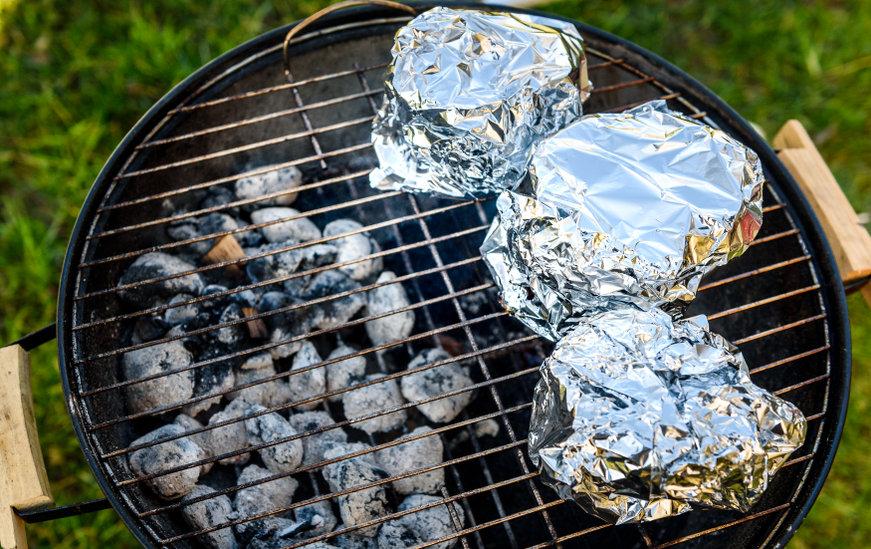
At times you will have ingredients on your grill wrapped in foil.
This is common for fish and some types of meat where you want to contain the steam and heat.
You can use a probe through the foil, but you should take care to avoid steam burns and escaping juices.
- Pierce the foil first with a long skewer, grill fork, or any other suitable utensil. Your hand should be a few inches away from the vent to avoid any released steam and liquid.
- When the steam clears, you can carefully insert a probe into the food.
Meat Thermometers Take the GUESSWORK Out of Grilling
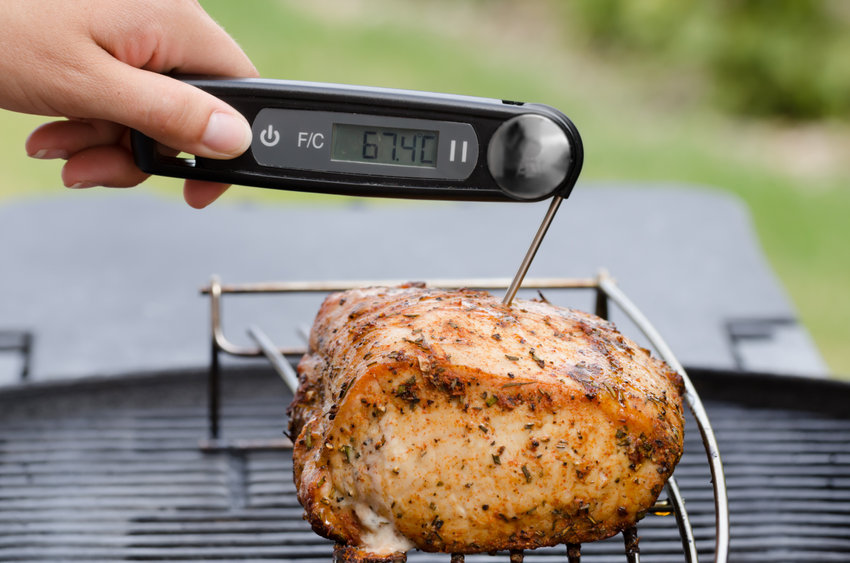
Have you ever noticed that your favourite recipes are inconsistent when you are grilling?
Even with a strict process, if you aren’t measuring the temperature, your food will come out a little different every time.
If you use a thermometer, you’ll always know when steak, chicken, sausages, burgers, turkey, and other ingredients are perfectly done to your liking.
Temperature affects flavour and texture.
Meat thermometers will elevate your grilling experience, and now you know exactly how and when to use them.
